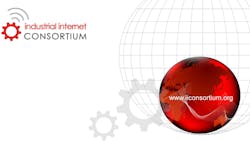The value of digital transformation isn’t a static number. It evolves in each area of deployment and continues to evolve as the transformation matures. The key to success for digital transformation in age of the Internet of Things, according to a new white paper from the Industrial Internet Consortium (IIC), is to agree on how to measure the improvements in ways that can be understood at every level of the organization.
“Defining objectives to be reached (such as a percentage error rate in manufacturing, or reduced delays in delivery times) and defining unambiguous targets for them, keeps expectations aligned between all parties involved,” IIC officials said in a summary of the white paper on digital transformation, or what IIC officials abbreviate as DX.
“The business case for transforming industrial, operational or business processes is rarely clear from the start,” IIC officials noted in their report. “The benefits and costs of each move must be weighed. They all require measurements based on metrics that must be clearly defined, well understood and approved by different parties: end-users, service providers, solution developers, technology vendors and managers.”
Those defined metrics may not change, but the goals they might achieve will continue to move over time, the IIC noted. “Because DX is a process, objectives and constraints change,” they acknowledged in their May 7 press release. “The improvement process is iterative, and proceeds by cycles. All of this relies on monitoring and measurements, where data generated by IoT plays a major role. To minimize disruption and to shorten the time to reach acceptable solutions an improvement cycle must be evaluated quickly.”
But even the agreement on the metrics isn’t enough, the IIC cautioned. In fact, taking a more human approach to the analysis of those metrics is every bit as important. “IoT technologies have been shown to shorten that cycle by automating data collection and analysis, then reducing delays and overhead in assessment and decision-making,” they stated. “But technology alone is not sufficient. A culture of measurement is needed as well as the insight to choose the appropriate metrics.”
The IIC cited three types of metrics that should be evaluated:
- Performance metrics assess how the solution performs over time and whether it meets expectations. These metrics are often based on quantitative measures and automated. They measure such quantities as speed, error rates, delays, product quality and throughput.
- Readiness metrics assess how prepared a solution is to meet expectations prior to operations. These metrics are often qualitative and in the form of manual scorecards. They measure preparedness for exhibiting properties such as security level, reliability, scalability, financial flexibility, transparency and responsiveness to customers.
- Profile metrics help determine the profile of a solution defined along different parameters, including the type of data being collected and its processing, connectivity characteristics, physical assets and regulatory constraints.
In summation, the white paper details the role the IIC has played in developing standards and metrics for the IoT community, in addition to the group’s continuing work with other global stakeholders on other technologies. It can be accessed here.
About the Author

Bob Vavra
Editor Emeritus, Machine Design and Power & Motion
Bob Vavra is the former senior content director of Machine Design and Power & Motion.

